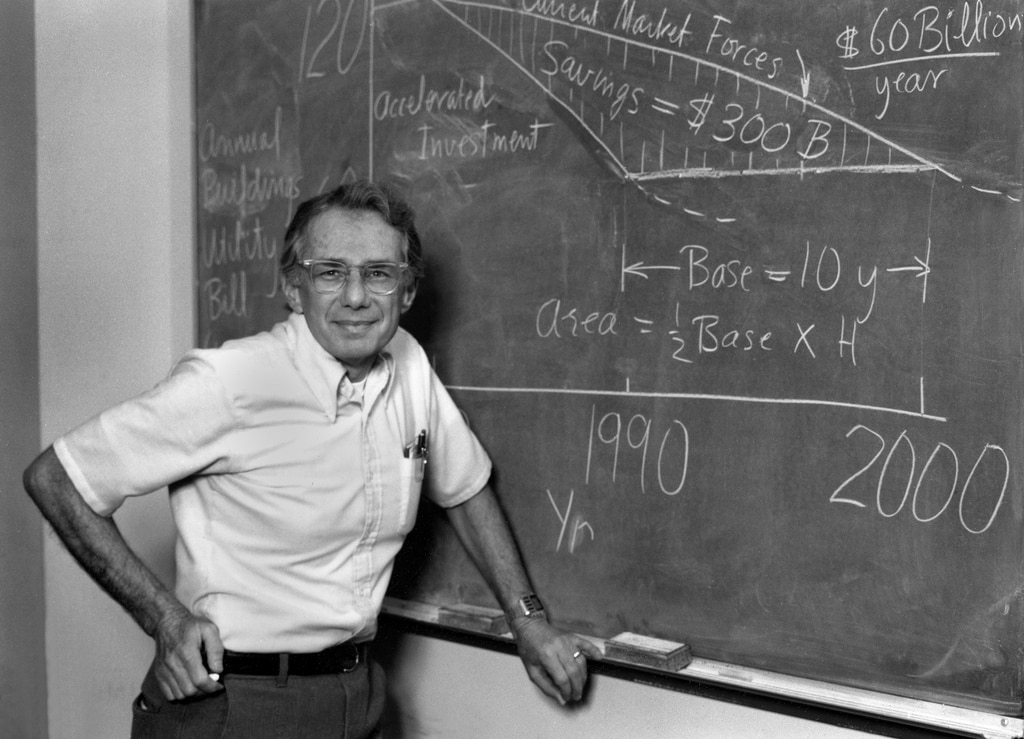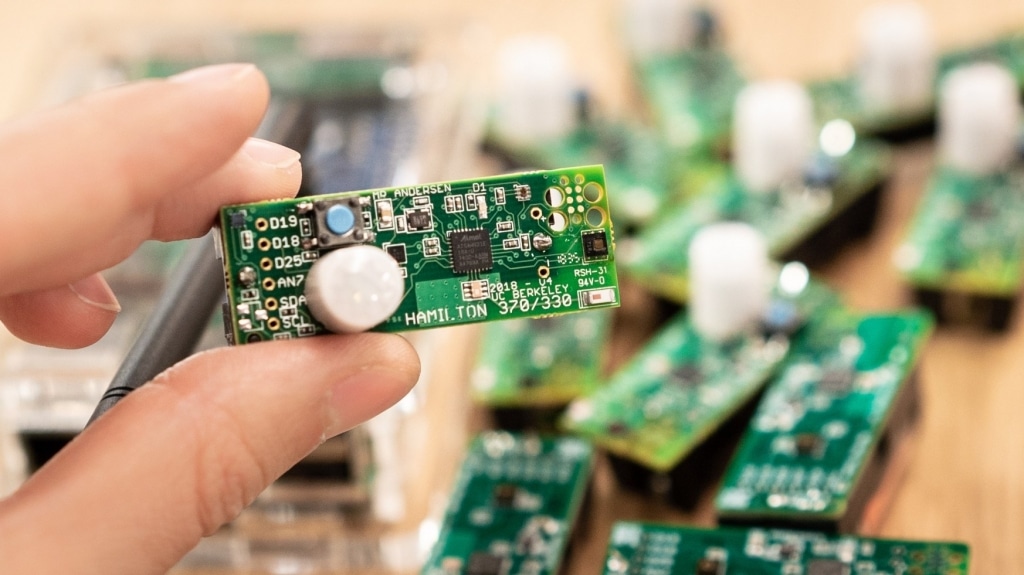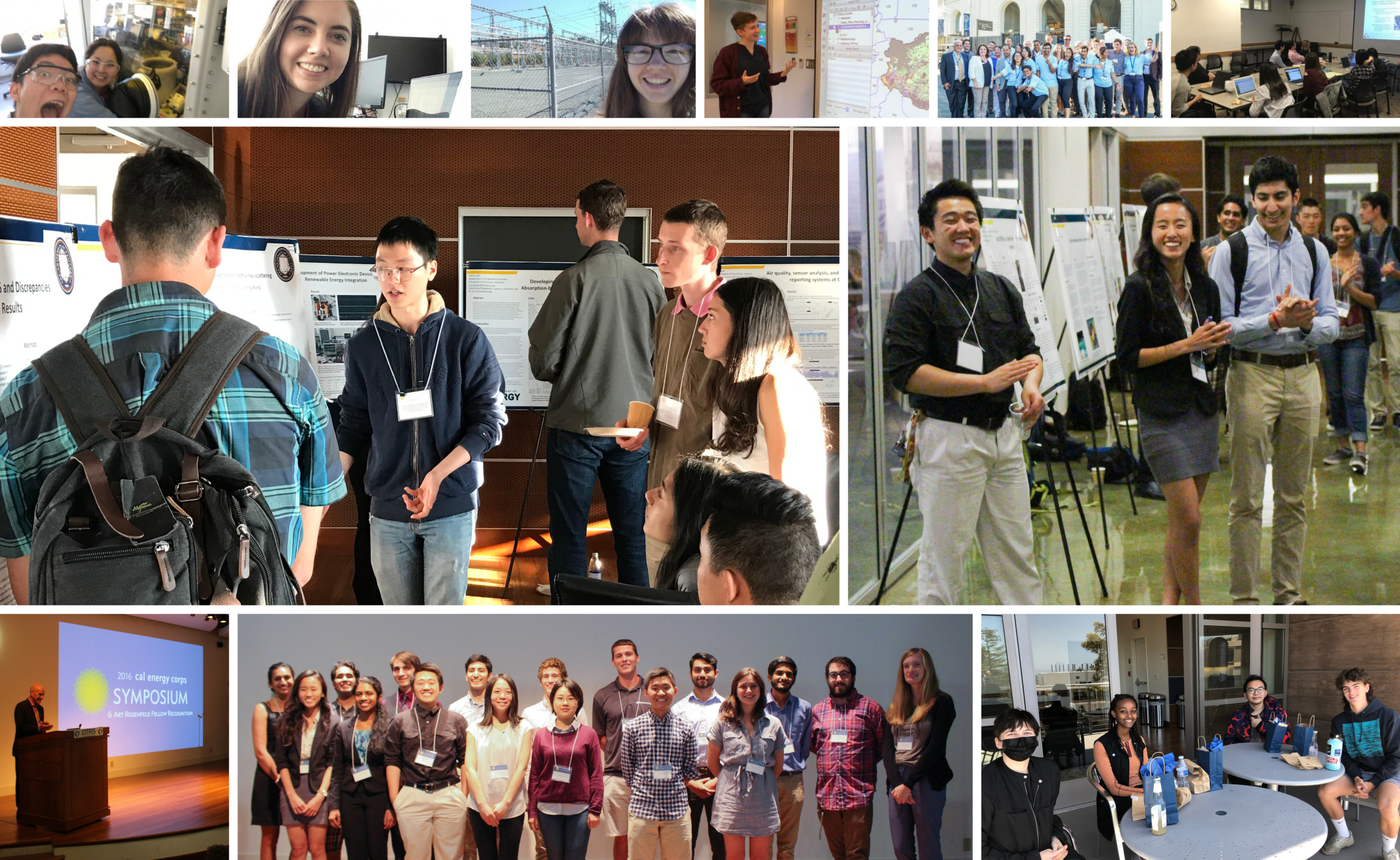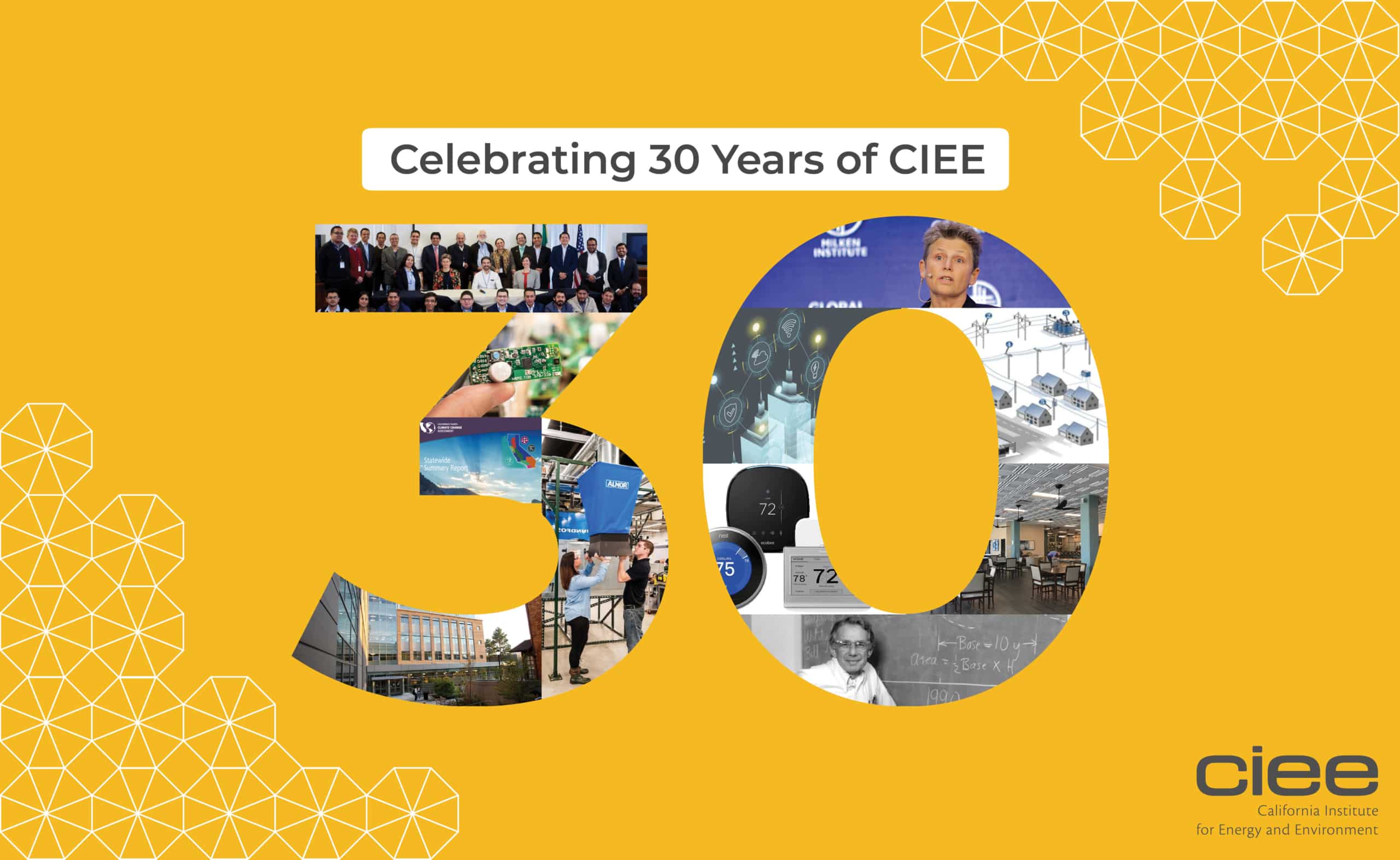Every now and then, it’s good to look back on all the years gone by and reflect on how far you’ve come. This is as true for institutions as it is for people, owing to the endless stories that make up an organization.
Since its launch in 1988, the California Institute for Energy and Environment (CIEE) has helped form the agenda for research in energy science, technology, and policy—identifying critical avenues on the complex route to meeting California’s energy goals. Alongside world-class experts and researchers from government, industry, and nonprofits, CIEE has been dedicated to tackling the latest energy challenges, yielding new ideas and applying cutting-edge technologies for the public good.
As CIEE clocks in over three decades of public-interest energy research, we look back at some of the key milestones that have helped shape the organization today.
Paving a Pathway for Energy Efficiency
Originally known as the California Institute for Energy Efficiency, CIEE was founded by Art Rosenfeld, a UC Berkeley physics professor and scientist at the Lawrence Berkeley National Lab (LBNL). CIEE’s original focus was to assist investor-owned utilities such as the Pacific Gas and Electric Company (PG&E) develop effective energy efficiency programs.
The fact that energy consumption in California remained more or less constant for decades after the first energy crisis in 1973—whereas it rose by 50% in the rest of the country—is known as the Rosenfeld effect. Thanks to efficiency initiatives advanced by the “Godfather of Energy Efficiency,” American consumers are saving billions of dollars in energy annually. Rosenfeld later served on the California Energy Commission (CEC) from 2000-2010.

CIEE’s first director was Jim Cole, who previously directed research and development (R&D) programs with the New York State Energy Research and Development Authority (NYSERDA) and was later succeeded by associate director Carl Blumstein in 2002. With over 45 years of experience in energy research, Blumstein has been leading CIEE in addressing pressing state and national energy challenges and remains integrally involved with many like-minded organizations, such as the American Council for an Energy-Efficient Economy (ACEEE).
During this time of formalization and growth, much of the work being undertaken at CIEE expanded beyond the realm of energy efficiency, addressing broader concerns of climate change and its impact on the environment. To better reflect this scope, CIEE kept its initials but officially changed its name to the California Institute for Energy and Environment.
Advancing New Technologies
A definitive characteristic of CIEE’s work has been enabling “technology transfer,” or the ability to deploy innovative research to accelerate the market adoption of new technologies. This quality evolved in the organization through many projects, including:
- Investigating duct system performance (1990s): CIEE’s initial utility-funded research portfolio included collaborations with LBNL, revealing that heating, ventilation, and air conditioning (HVAC) ducts leak more than previously known. Technology transfer from these research efforts helped the sponsoring utilities and many others create programs that reduced energy waste from ducts.
- SPEED (led by CIEE from 2004-2014): Taking a collaborative approach to market transformation, the State Partnership for Energy Efficient Demonstrations (SPEED) leveraged partnerships with manufacturers, technology stakeholders, and demonstration hosts to conduct more than 100 demonstrations (many of which were on UC campuses) addressing energy efficiency in buildings. SPEED was a program under the CEC’s Public Interest Energy Research (PIER) program, which is now the Electric Program Investment Charge (EPIC) program.Fun fact: Demonstrations with the California Lighting Technology Center (CLTC) in particular had a wide-ranging impact by accelerating the adoption of now-ubiquitous LED technology!
- Supporting UC’s Carbon Neutrality Initiative (ongoing): Since 2000, CIEE has been helping UC campuses reduce greenhouse gas emissions. This included assisting with the planning of the newest campus at UC Merced, as well as facilitating technology adoption via the SPEED Program. Perhaps most prominently, CIEE supported the technology transfer of LBNL-led research on monitoring-based commissioning for buildings via a partnership between UC, the California State University (CSU) campuses, and energy utilities.
All this work became a technology catalyst for emerging climate action leadership under the UC Carbon Neutrality Initiative. Most of UC’s progress toward carbon neutrality has been through direct emission reductions—which CIEE has mainly supported—or the development of renewable energy resources for campus use. More recently, CIEE is also helping advance UC’s carbon offset procurement strategy through the Global Climate Leadership Council.

Fostering Student Engagement, Discovery, and Growth
One of the most rewarding aspects of CIEE’s work has been nurturing student research and innovation in energy and climate science. The Art Rosenfeld Award and Cal Energy Corps are key programs that keep CIEE engaged in the pulse of UC Berkeley.
The Art Rosenfeld Award for Energy Efficiency provides funding to a UC Berkeley graduate student with a demonstrated passion for pursuing scientific discoveries, policy changes, and/or the implementation of energy efficiency technologies in the world. The Cal Energy Corps program engages top UC Berkeley undergraduates in a summer internship with leading organizations to further the design, development, and delivery of sustainable energy and climate solutions.

From adept undergraduate students to experienced doctoral candidates, CIEE seeks to empower the next generation of energy and climate leaders with the knowledge and hands-on experience needed to help shape the future.
Learn about student opportunities at CIEE
The CIEE of Today
Founded at LBNL, then hosted for nearly a decade by the UC Office of the President, CIEE landed at UC Berkeley in 2009. In 2018, CIEE joined forces with CITRIS and the Banatao Institute, leveraging the resources and synergies within the CITRIS ecosystem to enhance its capabilities.
As part of the CITRIS Climate initiative (formerly the Sustainable Infrastructures initiative), CIEE continues to pursue cutting-edge research alongside essential partners. The EcoBlock project—which seeks to retrofit a neighborhood in Oakland with a solar microgrid, energy-efficient home upgrades, and shared mobility improvements—also stems from the CIEE-CITRIS partnership.
In 2021, CIEE officially teamed with the National Science Foundation’s Building Efficiency for a Sustainable Tomorrow (BEST) Center, a national collaborative promoting state-of-the-art building technician education and interdisciplinary research.
Learn about the CITRIS Climate Initiative
What’s Next for CIEE?
Today, CIEE’s research spans an ambitious range of topics, from electricity grid innovation and enabling technologies to reducing energy usage in buildings. In the future, CIEE leadership sees the organization delving more into climate adaptation work, along with a continued flexibility and sensitivity to the needs of the day.
Whatever endeavors tomorrow brings for CIEE, they will benefit from the organization’s commitment to tackling climate change, improving energy efficiency, and advancing technology for a more sustainable and equitable future.


